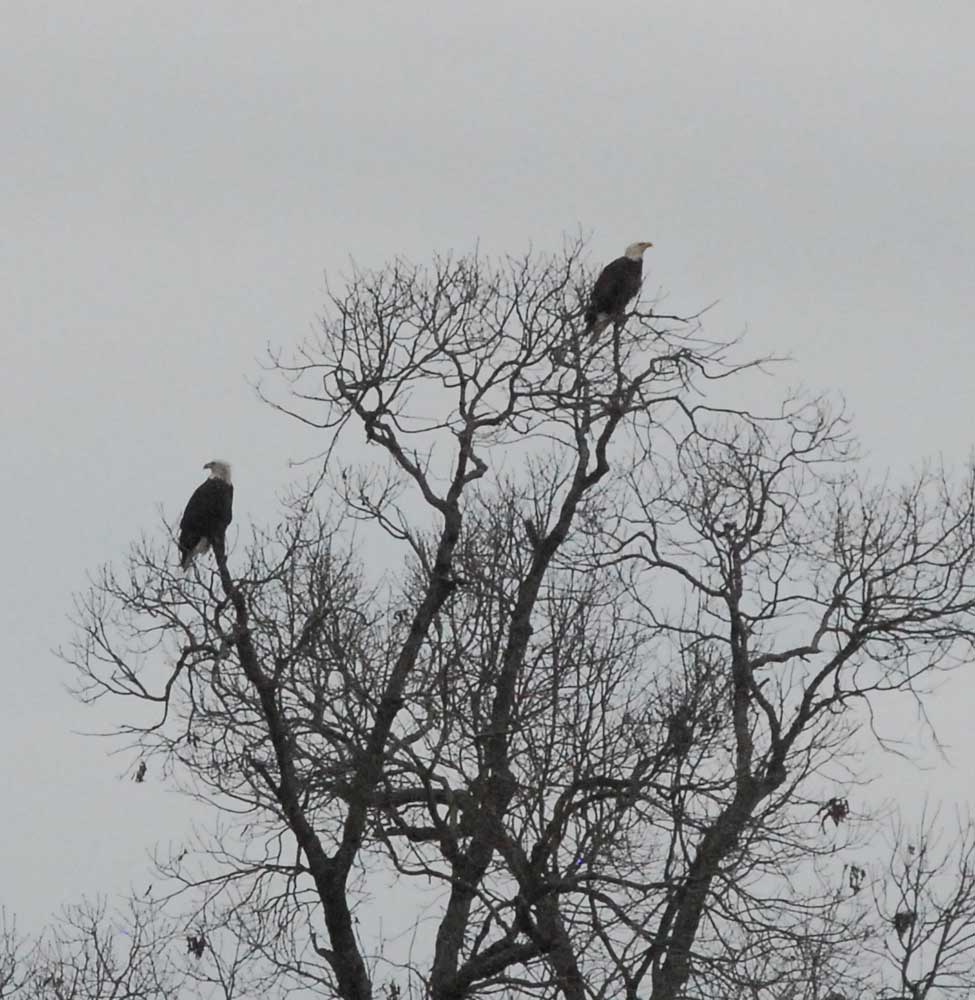Sight To See: Bald Eagles Are Texas’ Ultimate Snow Birds
Published 9:34 pm Saturday, January 16, 2021

- Bald eagles still are not common in East Texas, but their numbers have grown over the year. They can be found along most rivers and around public and private lakes throughout East Texas during the winter months.
I have a hierarchy of things in the wild that get my heart beating. Actually it is a long list, but I will narrow it down to three — elk bugling, migrating geese in an aerodynamic V formation and seeing a bald eagle soaring overhead.
I have to travel quite a bit to enjoy the first two, but with luck I can spot an eagle or two each winter in East Texas.
Commonplace in some states, eagle sightings are still a rarity in Texas even if the birds are not. They are found on most river systems and lakes around the state. A number of pictures have popped up recently of bald eagles at Lake Tyler and Lake Palestine as they have arrived for their winter stay and have started to prepare for nesting.
My most recent sighting came a few weeks ago while visiting friends’ property in Smith County. I was driving in a pasture when one suddenly flew across the lake right over my truck. It came across as low and close as I have ever been to one in the wild, and of course I did not have a camera.
I watched it glide toward the dam and to a tree to roost, then rushed back to Tyler and to grab my camera and went back in hopes of seeing it again.
I parked at the same spot, and after not seeing anything I decided to walk across the dam in search of the bird and possibly a nest. There had been a nest on the property in years past, and I was hoping they had returned to it or were working on another.
I did not find the bird, but not far back in the woods I spotted what appeared to be a nest. There are a number of options for nest builders this time of year including hawks and owls, but this nest had one thing that lent it toward eagles and that was the size of some of the support limbs that had been used to build it. They were too hefty for other birds.
Not seeing the bird, I went back to the truck. That is when I saw them. A pair. They flew across the lake together and stopped in top of the lone tree in the pasture. It was a gray day, but still those white heads stood out.
I sat and watched them with my binoculars and through a camera lens until they flew across the lake again. I decided I had disturbed them enough and left.
My fascination with eagles is not as much a national pride thing as it ecological. In the early 1970s it is believed there were no more than 400 breeding pairs of bald eagles in the lower 48 states. In 1971, Texas’ four known nests produced six surviving chicks.
Today that number is estimated at 10,000-plus pairs across the lower 48. It is a recovery not unlike elk, white-tailed deer, turkeys and brown bears. After being placed on the Endangered Species list in 1967, bald eagles were delisted in 2007.
It has been well-documented that a ban on the pesticide DDT played a major role in the return of the eagles. Commonly used on farms following World War II until its ban in 1972, it was discovered that chemicals in the product resulted in softened shells in eagle eggs leading to reduced production and survival.
By the time DDT was introduced bald eagle numbers were already declining because of the loss of habitat and, surprisingly, it was not illegal to shoot or trap them. It was not until 1940 that the nation’s symbol was actually protected.
Traditionally bald eagles have been found in the eastern two-thirds of the state, and biologists believe most of the suitable habitat is being utilized.
Bald eagles usually begin arriving in the fall and migrate out in March. They will nest from October through February, but since they don’t breed until they are 5 not all will nest here. Those that do typically return to the same nest site year to year, and their offspring usually follow.
How many eagles come to Texas is dependent on the number of resident birds along with the level of production in other states.
Immature bald eagles are actually covered in dark feathers. It is not until they become 3 or 4 that their head feathers turn white.
The birds are also the largest raptor found in Texas, with mature birds weighing upwards of 10 pounds and having a wingspan of 80 inches. While that size makes the birds stand out, it also may be part of the reason they are seldom seen. Bald eagles are lazy and spend the vast majority of their day roosting.
It is amazing that in a time where urban sprawl and population growth has made the wild world smaller to see a species actually improve. That makes bald eagles a sight to behold.






